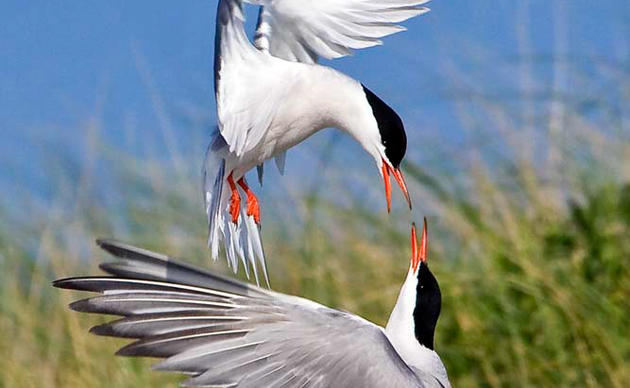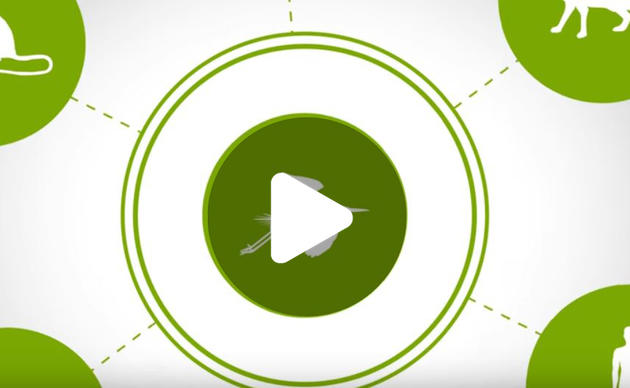Our History
The origins of today’s Audubon Minnesota office begin in 1979 when Audubon chapters in Minnesota banded together as the Minnesota Audubon Council to focus their collective efforts on the decisions made by state government affecting natural resources. Seven state chapters together contributed $2,700, and in that year the Council hired our first staff person, part-time, to work as a lobbyist.
In the 1980s, we worked in the state legislature on such important issues as uranium mining, wetland conservation, the creation of Tettegouche State Park on Lake Superior, and protection of the timber wolf from a state-proposed sport-hunting season. Beyond the state capitol, federal issues to preserve the Boundary Waters Canoe Area and reduce acid rain were on the forefront of our agenda. Local issues were also tackled, such as defeating riverfront development in a particular area of St. Paul that would have destroyed Pig’s Eye heron rookery and nearby bald eagle nests.
An early, big victory was won with Audubon’s efforts to create revenues for a state non-game species fund from individuals’ donations through their state income-tax. Known as the “chickadee check-off” Audubon led the effort to secure this legislation. Since 1981 it has grown into a comprehensive program for the state’s non-game wildlife generating over $22 million for birds, animals, amphibians, fish and selected invertebrates such as mussels and butterflies. Among its many accomplishments, the program has reintroduced trumpeter swans (now numbering over 2,000) after a 100 year absence, brought back peregrine falcons (nearly 40 pairs) and bald eagles (more than 700) as well as sponsoring extensive environmental education, habitat protection and important wildlife research projects.
Our effectiveness with state legislation lies in the strength of our 11,000 members around the state to become involved to make a difference. In the 1990s we started annual “Lobby Day” training sessions and grassroots lobbying days at the state Capitol that has grown to include dozens of members of allied organizations and Auduboners from all corners of Minnesota. Annual fall Council meetings added a grassroots process to select priorities for legislative and year-round conservation efforts.
It was through these grassroots efforts that we helped win another critical victory for conservation. After years of toil working within a broad coalition of conservation and sporting groups Audubon efforts led to the passage of the landmark “Wetland Conservation Act” by the Minnesota legislature in 1991. As opponents tried several times to weaken the act, Auduboners lead efforts to defend and implement the Act. Today, wetland protection has become embedded in law and practice across Minnesota – and declarations of support for “No Net Loss of Wetlands” have become mandatory for any statewide politician looking for support from conservation-minded Minnesotans.
Beyond lobbying efforts, Auduboners wrote and published the highly acclaimed three volume “Citizen’s Guide to Minnesota Wetlands” series. Dozens became trained “Wetland Watchers” involving themselves in local battles to protect significant wetlands. These efforts finally broke the pattern of destructive water control projects sponsored by watershed districts in Red River Valley, and led to landmark agreements resulting in wetland and stream restoration projects as a means of flood control in the area, which holds to this day.
Audubon’s efforts to conserve critical bird habitat in Minnesota’s forests have always been a priority. In the 1990s, staff and volunteers played a lead role in demanding and obtaining a comprehensive state study of the impacts of timber harvesting on our forest environment. This landmark study, the “GEIS on Timber Harvesting” documented significant risk of declining populations for dozens of forest dependent birds, including neotropical migrants and the red shouldered hawk.
Audubon forest activists created and led a grassroots effort to organize a conservation alternative to submit to the Forest Service during their eight year process to revise the forest plans of both the Superior and Chippewa National Forests. This comprehensive effort developed a highly refined proposal, which played a strong role in focusing the forests on the needs of older-forest dwelling species.
Auduboners eagerly embraced the market-based certification standards of the Forest Stewardship Council (FSC). Audubon members, staff and the Audubon Center of the Northwoods were early leaders in the process of adapting FSC worldwide standards for use in the Lakes States region of the United States. The Audubon Center became one of the first certified forests in the region.
Today, Audubon Minnesota continues its work to make a positive difference to birds and their habitats in Minnesota.
How you can help, right now
Donate to Audubon
Help secure the future for birds at risk from climate change, habitat loss and other threats. Your support will power our science, education, advocacy and on-the-ground conservation efforts.
YOU can be a community scientist!
You can volunteer with Audubon Minnesota and help support birds.




